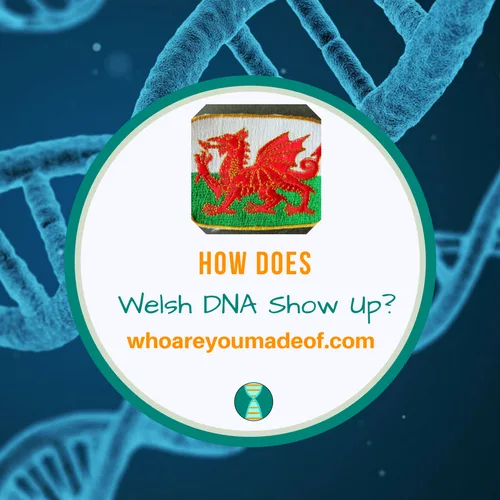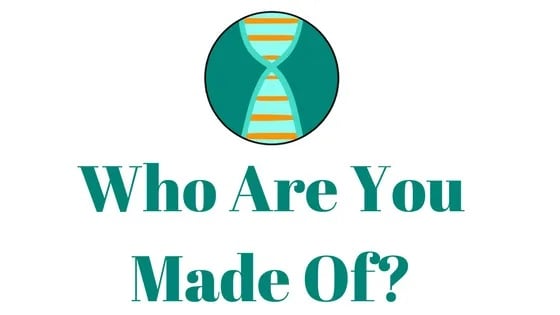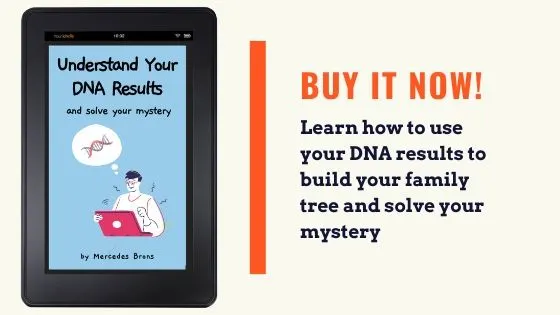If you have Welsh ancestry and are thinking about taking a DNA test, or have already taken one, you might be curious about how your Welsh roots will look on your ethnicity results.
In this post, I will explain the basics of Welsh DNA, from how it shows up on autosomal DNA tests to the basic genetic history of the Welsh people.

There is strong evidence that the Welsh people look very different – from a genetic perspective – than the rest of Britain. In fact, there are distinct genetic differences between people who are native to the north of Wales, compared to natives of south Wales.
If you have substantial amounts of Welsh DNA, there is a good chance that it would show up as such, with some limitations, on a DNA test.
How does Welsh DNA show up?
As DNA testing and ethnicity estimate technology improves, there is a chance that DNA testing companies might be able to further define what “Welsh” DNA really looks like, and report it as its own region, or at least sub-region. For now, people with Welsh ancestry might see their DNA reported as follows, with the exact category having a slightly name different from company to company:
- My Heritage DNA: Irish, Scottish & Welsh
- Ancestry DNA: Wales (with 4 available sub-regions as of 2023)
- Family Tree DNA: England, Wales and Scotland
- 23andMe: British & Irish
- Living DNA: Northwestern Europe
Some people with extensive Welsh ancestry are very proud of their history, and might wonder why their Welsh DNA doesn’t have a category of its own on all of the DNA testing sites. For example, sometimes Ireland, Scotland, and Wales are sometimes grouped together.
Continue reading for an explanation of why Welsh DNA is sometimes difficult to separate from geographically close regions.
Why is Wales included with Ireland and Scotland on ethnicity estimates?
The western part of the British Isles, which includes the part of island of Britain and the entire island of Ireland, were populated initially by six distinct Celtic groups. These groups each settled in different regions:
- Ireland
- Scotland
- Isle of Mann
- Brittany
- Wales
- Cornwall
For the purpose of this post, we’ll just discuss Ireland, Scotland, and Wales (or Éire, Alba, and Cymru, in their native languages). People living in these regions have spoken their native Celtic languages since the arrival of their Celtic ancestors as long ago as 2000 B.C.
They were able to retain their cultural, linguistic, and genetic identity for various reasons, but geography played an important role. Wales is a very mountainous region, and this may have contributed to the Celtic tribes’ success in keeping the Roman, Viking, and Anglo Saxon invaders at bay.
This is not to say that there was no contact between Wales and the invading groups. For example, many Welsh adopted Christianity before about 300 AD, and there is substantial evidence of Roman military outposts in certain parts of Wales.
When the Roman military withdrew, the Anglo Saxon tribes were less successful in establishing settlements and military rule in Wales. Even though Wales was eventually united with England to form what would later become the United Kingdom, Wales maintains a strong connection to the Celtic past through language and culture.
While Wales maintained a relative distance with the non-Celtic immigrants and invaders, there was still lots of contact between descendants of those six Celtic tribes I mentioned. Have you ever heard of Celtic warfare?
It has quite a reputation.
These Celtic tribes warred with each other, sometimes allying themselves with outside groups against one another. There was migration between the Celtic areas, too.
This is how and why the Irish/Scottish/Welsh genetic identity formed, and why the three nations of people are generally grouped together when the genetic identity of the British Isles is discussed.
Is there a way to tell whether DNA is Irish, Scottish or Welsh?
The best way to find out whether your DNA matches the Wales region is to take an Ancestry DNA test. As of 2023, this is the only test that has Wales as an individual region along with Welsh sub-regions.
Testing with Ancestry DNA is a good way to know whether your DNA matches one of the sub-regions, but if it doesn’t, it doesn’t necessarily mean that your family is not from those sub-regions, or that you definitely have Welsh DNA.
Let’s just say that this ethnicity estimate business is a work-in-progress – but it is still helpful as a general guide.
Building a family tree is the best way to trace your Welsh roots
If you really want to trace your Welsh ancestry, the best thing you can do is to start building a family tree and use your DNA matches as a guide. As you build your family tree, you should find that you have ancestors in common with your DNA matches, which you should be able to verify by viewing their family trees.
This is a great way to verify your research.
Viewing the family trees of your DNA matches can also help you get an idea as to which part of the world you should be researching in, since you share common ethnicities with your DNA cousins (though different ones with different matches, depending on the DNA match and their distance from you).
Note about comparing ethnicity: If you tested with Ancestry DNA, you can now compare your ethnicity with your DNA matches easily by using the mobile app.
Do you want to take a DNA test to find your Welsh DNA?
If you haven’t already done a DNA test, you might be interested in testing with one of the major DNA testing companies in order to see if your Welsh DNA shows up on your results.
I generally recommend testing with Ancestry DNA, but for recent Welsh ancestry, you might be interested in also testing with Living DNA. They are a company based in the UK, and while they are still developing their DNA matching technology, they do a great job with ethnicity estimates for people with British Isles ancestry, and also test for Y-DNA and mtDNA, which is a great help in tracing your family’s ancient migrations.
If you’d like to order either of these tests – or both, why not? – you can use the links below. They are affiliate links, and I will receive a very small commission at no extra cost to you – thanks for your support:
Conclusion
I hope that this post helped you understand a little bit about how Welsh DNA might show up on a DNA test, gave you some background on the Welsh people, and explained why Welsh DNA is generally grouped with DNA from Scotland and Ireland on ethnicity results.
If you have any questions, comments, or concerns, I would encourage you to leave a comment below.
Thanks for stopping by today!


Yvette Moore
Monday 8th of April 2024
My father was adopted, but seems to have had very Celtic colouring (black hair, green eyes, olive skin) which I had thought was Mediterranean! I'm 20% Welsh according to Ancestry, with most of the rest being West Midlands, Midlands, 3% Scottish and 2% Norwegian, which, to be fair, is going to be very common!
I know that 25% is a grandparent, but I can't work out what 20% would be. It's odd, but growing up, we always followed Welsh rugby, and Max Boyce. Maybe it was genetic LOL but I'd really like to embrace my small amount of Welshness because I've always hated being English. I have no idea why.
Terrance Roy Williams
Wednesday 27th of March 2024
My Ancestry DNA results show I am 92% Welsh, 6% English/N.W.European, with 2% Scottish, at one point there was 1% Norwegian. My tree goes back 1400 years via dynastic links, and Royal Family trees, (not too sure they are accurate information). It centres around Owen Tudor, & Catherine De Valois, he is my 12 times GGF, she is both 12 times & 13 times GGM, as being previously married to Henry V. Tudor line goes back to around the 640s A.D. The French line goes from the DeValois, to the Capets, with Hugh Capet marrying King Athelstan’s Sisters, so back to King Alfred the Great plus the west Saxons! So I am not sure if this is sufficient evidence.
Mercedes
Wednesday 3rd of April 2024
Hi Terrance, Thank you for leaving a comment! You have certainly done a lot of research and have an interesting lineage! Sincerely, Mercedes
Naomi
Thursday 13th of July 2023
I was amazed that my son's DNA test (23andme) came back with an almost pure welsh DNA ancestry... he is 99.9% Welsh (and trace 0.1% from Central Asia). We know that his grandfather was welsh and I have a welsh great grandparent. Is it unusual to be 99.9% from one ancestry group? Thanks
Charlotte
Wednesday 14th of June 2023
My husband's great granddad, Thomas immigrated from Wales to the USA back in 1888. My husband has taken both his Ancestry and ydna tests. Several in his family have taken theirs, too. He has another cousin who took his ydna, too. It helped them confirm who Thomas's Grandfather was.
In 2019, we took a bus tour and then added 7 days at the end to where he lived and a cousin of his stayed with us in a place we rented. It was great fun. Wales is so beautiful!
This weekend, we are having a family reunion in Ellicottville, New York where his great grandad is buried. Through ydna, we've discovered that his male ancestors lived in Ireland for thousands of years before going on to Wales about 900 ce. It looks like they lived in the North for a long time and then moved to the Dublin area before moving. I'm trying to figure out what would have prompted the move or if there was something specifically happening during that time period to cause someone living in Ireland to immigrate to Wales. Maybe someone living there can answer that question for me. Thank you for your help!
Samantha E
Tuesday 2nd of May 2023
Thank you! I did 23 And Me and was so surprised to see no a welsh listed when I know my Great Grandfather was born there.
Samantha E
Tuesday 2nd of May 2023
Apologies for the typos: *no Welsh listed…